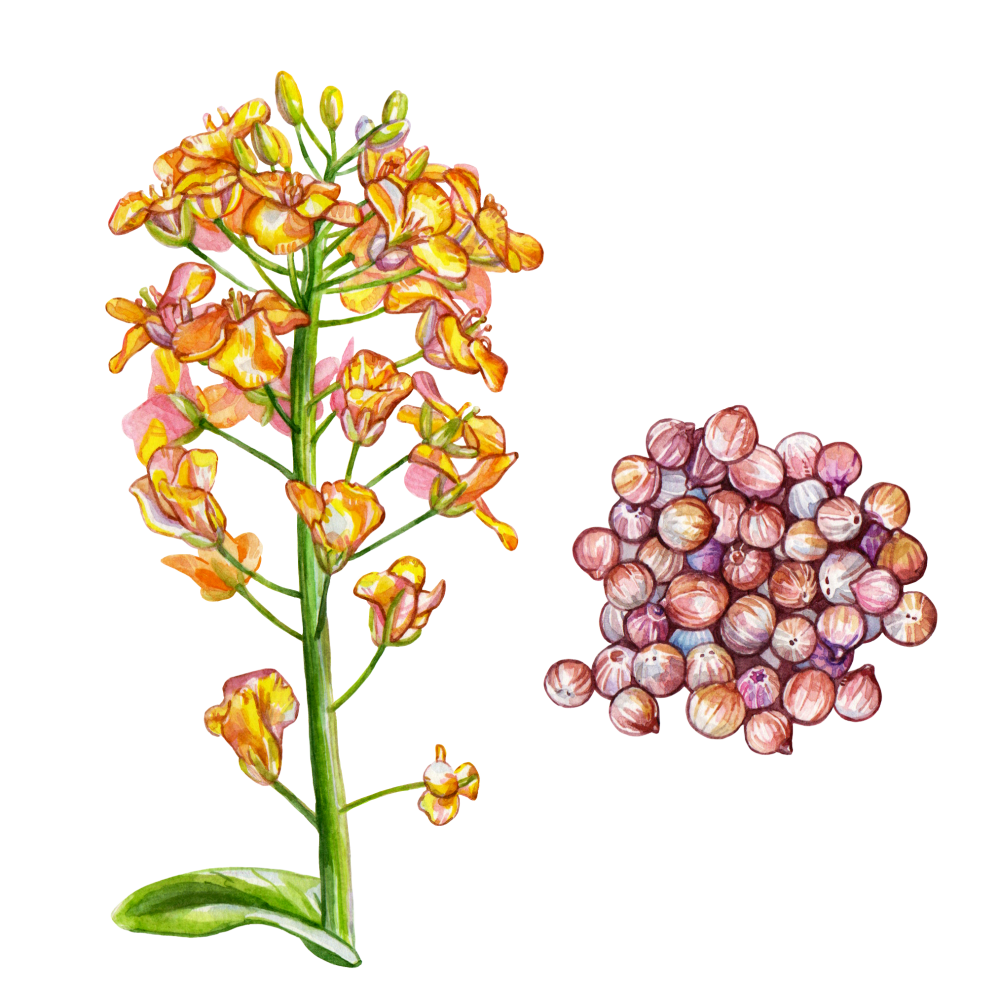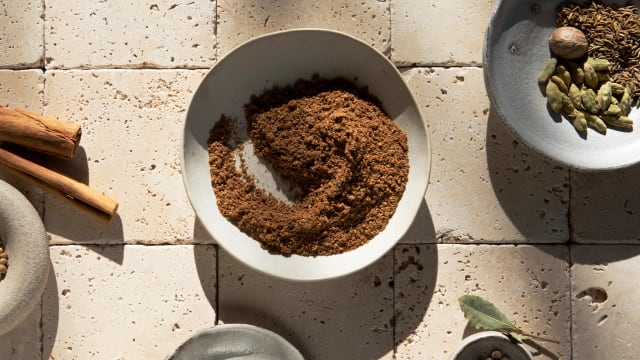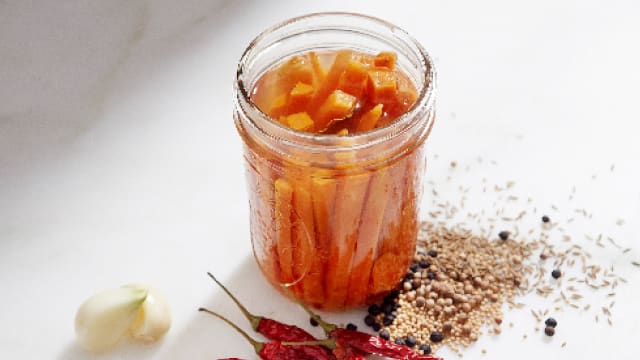Mustard

Latin name: Brassica juncea, B. nigra, and Sinapsis alba
Uses: Spice, condiment, vegetable, oil
What is mustard?
Before Spanish and Portuguese explorers brought chiles from the New World, much of the pungency in Asian and European cuisines came from mustards and horseradish (another mustard family member). In the United States, mustard is often relegated to a yellow squeeze bottle for hot dogs, but it still plays a prominent role in many spice-forward cuisines of the world.
Why is mustard healthy?
Like all its brassica brethren, mustard contains many health-promoting phytochemicals including carotenoids, phenolic compounds, and glucosinolates that act as detoxifiers against oxidative stress. Mustard is also a rich source of dietary folate and vitamin A and has been used in several Asian traditions to treat contact dermatitis, cardiovascular ailments, and respiratory distress.
What does mustard taste like?
Unlike the heat of chiles, mustard’s pungency gets right up your nose. Brown and black mustard seeds are spicier than white and yellow seeds, but most varieties of mustard greens taste similar — earthy and green, with a slightly spicy and bitter finish.
How do I use mustard?
You can make your own mustard by soaking seeds in white wine, beer, or vinegar until softened and then pureeing with a little salt and honey. In northern European cuisines mustard (the condiment) is usually smeared on meats, and mustard is certainly at home with your favorite meat analog. A grainy brown mustard is a must for soft pretzels or even boiled baby potatoes. Add a spoonful of mustard to sauces and dressings to add body and depth — it’s effective at emulsifying vinaigrettes, brightening up rich aioli, and adding lift to cream sauces.
What does mustard pair well with?
Add whole mustard seeds to pickles. Anything from dill gherkins to sharp, spicy pickled mango benefits from it. You can sprinkle softened pickled seeds (vegan caviar!) on salads, use them to zhuzh up a deviled egg, or swirl them into whipped crème fraîche for topping blini. Try mustard greens in any dish that uses other greens: for saag, in bean soups, garlicky stir-fries (look for gai choy in Asian markets), and for gat kimchi. Besides being pungent and delicious, Korean mustard greens have the additional benefit of being beautiful, with purple-tinged, ruffly leaves.
Where does mustard grow?
White and black mustards hail from North Africa, the Middle East, and Eurasia, and brown mustard originated in the Himalayan foothills. Canada and Nepal produce much of the world’s supply of mustard seeds, but it’s also grown in Europe, South Asia, Argentina, and Chile.
How to buy mustard:
Greens should be bright and not wilted. Buy mustard seed whole and grind it as needed. Keep the seeds away from light and heat.
Surprising mustard fact:
Because of its high erucic acid content, mustard oil is labeled “for external use only” in the US, Canada, and Europe. In lab studies with rats, high doses of erucic acid were observed to cause heart lesions. However, the studies’ relevance to humans has been disputed. Rats are unusual in that they have limited ability to process the acid and the effects haven’t been observed in any other animals.




